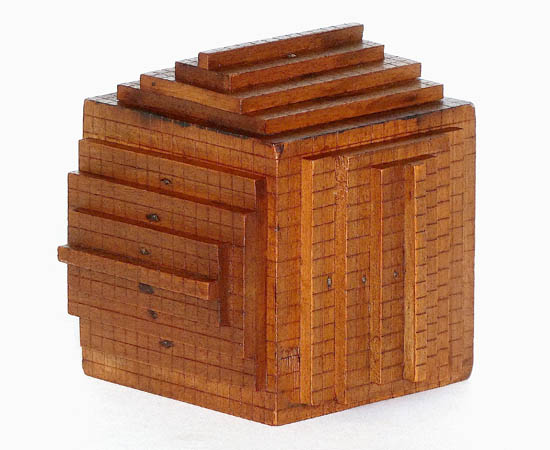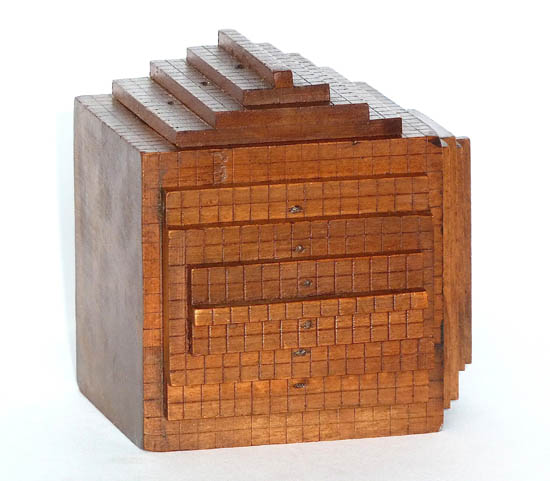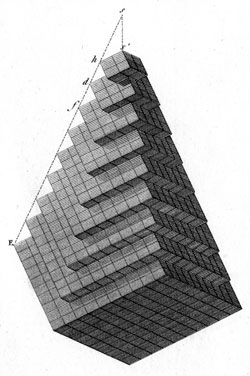Wooden crystal model illustrating Haüy's laws of decrement
France, early 19th century
Haüy considered crystals to be build up by the repetition of small fundamental units which he called "molecules intégrantes". The shape of these units was appropriate to the particular system of symmetry to which the substance belonged. By an orthogonal stacking of cube shaped integrant molecules one gets a crystal of cubic habit, but by regularly omitting rows in the stacking process, other habits (like the octahedron, the dodecahedron, the pentagonal dodecahedron, etc.) emerge.
This wooden model (height 5.5 cm) represents Haüy's assumption of how the dodecahedron with pentagonal faces (pyritohedron) is constructed from a cubic nucleus by decrement of two rows of "integrant cubic molecules" for each newly added layer on two opposite edges combined with a decrement of only one row of molecules on every two successive layers on the other two edges. This combination occurs in three perpendicular directions.
The model whose edges show 17 cubic "molecules" fits exactly the illustration in the atlas of Haüy's "Traité De Minéralogie" (1801).
private collection


